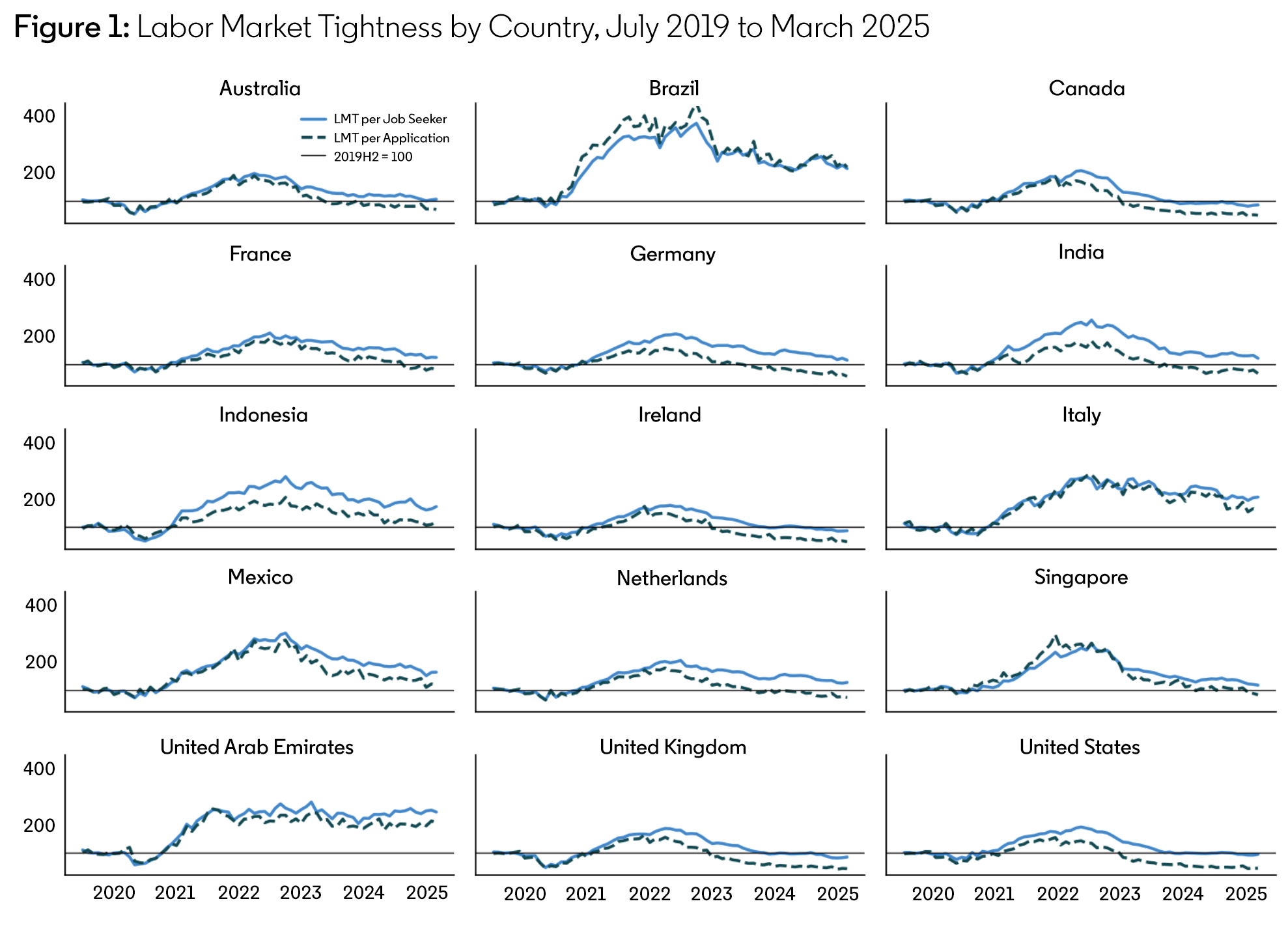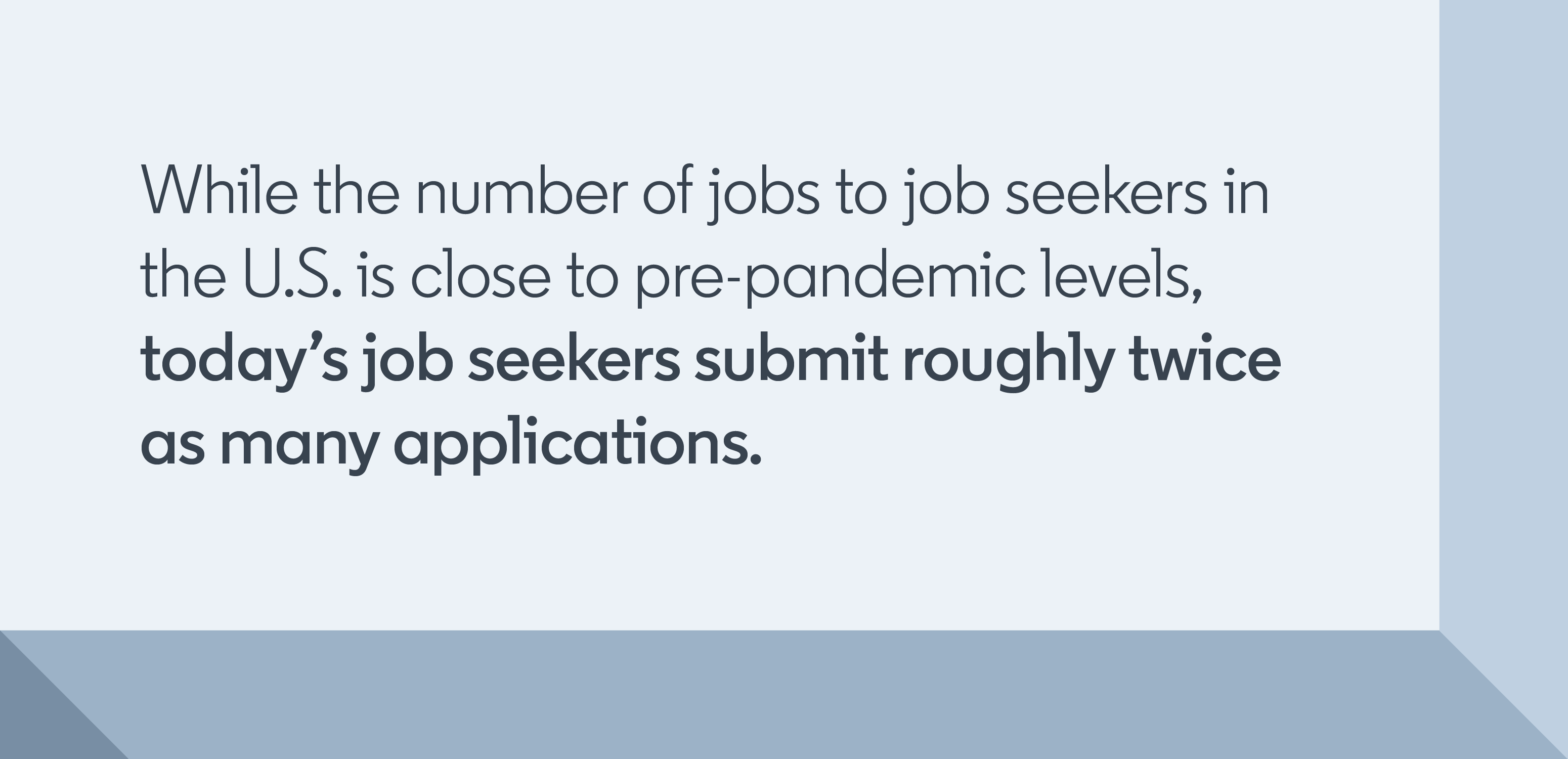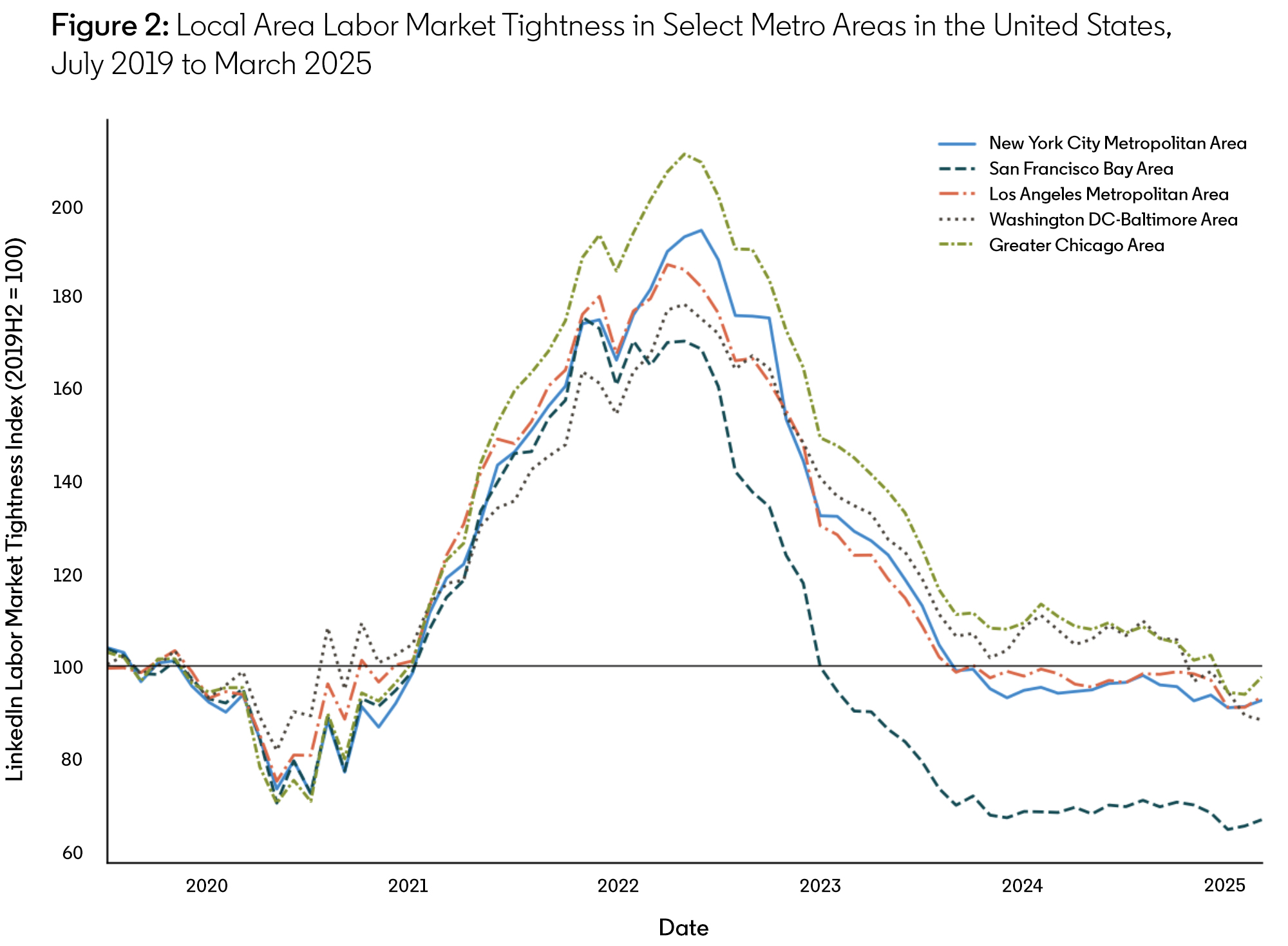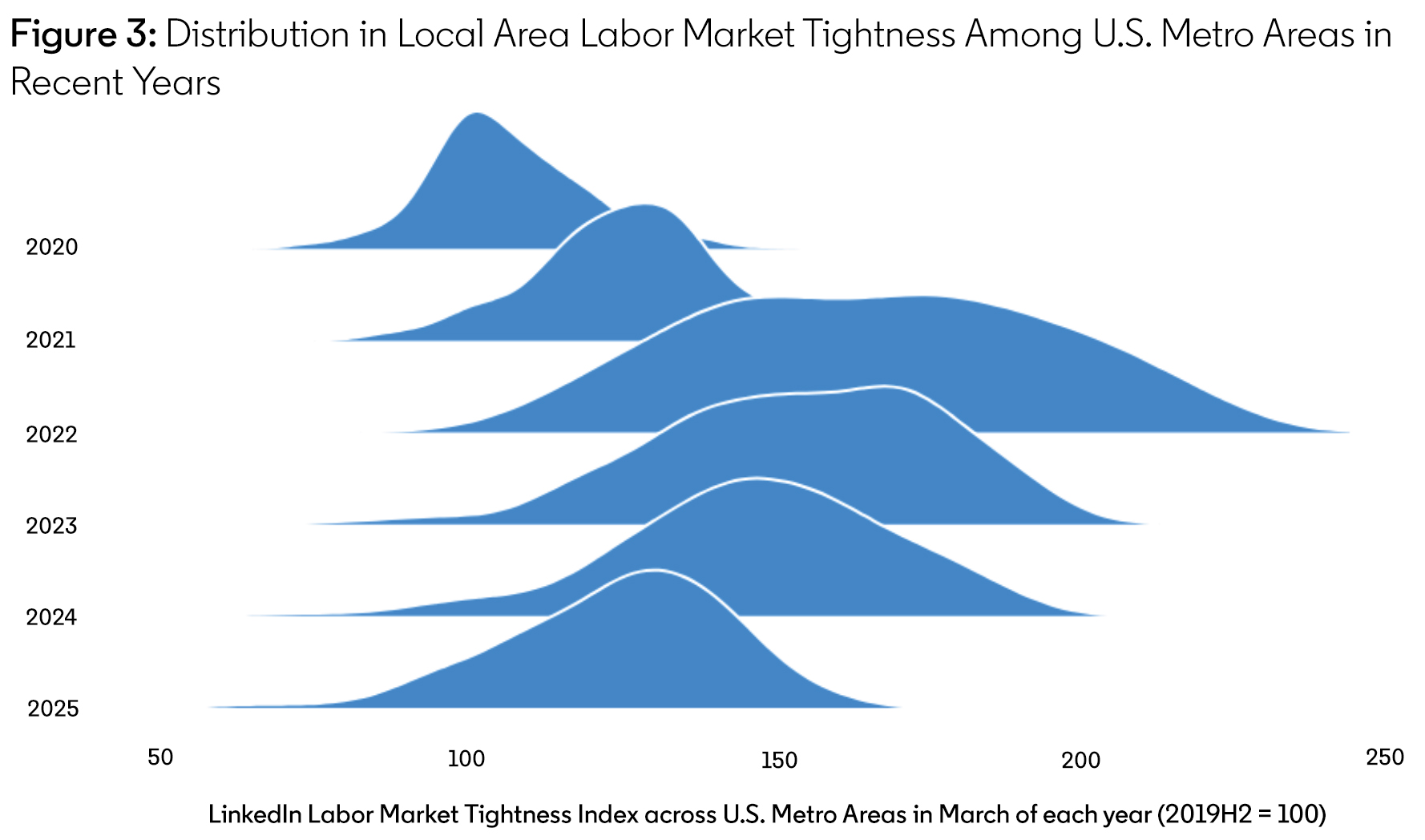
Labor Market Tightness: LinkedIn's Measure of Job Competition
Labor market tightness is the relative availability of job opportunities for job seekers. It’s an incredibly important measure as it captures how competitive the labor market is for those looking for work. From shaping career trajectories and wage growth to influencing business investment and important policy deliberations, labor market tightness has a wide-reaching impact on the economy.
With nearly 10K members applying for jobs on LinkedIn every minute, there’s a lot of data we have on hand about this topic. What is the data telling us in the moment of uncertainty? And why is it important?
On the policy front, many central banks around the world pay close attention to prevailing labor market conditions to assess underlying wage growth and associated inflationary pressures. When the labor market is tight, there is upward pressure on wages. While this may be good for workers, it can lead to unsustainably elevated inflation as companies pass along such labor costs onto consumers.
Amidst today’s broader policy and economic uncertainty associated with global trade, assessing underlying labor market tightness is even more important. Calibrating appropriate monetary policy in this environment requires a keen understanding of labor market conditions as they evolve in real time.

As described in a recently published technical note, we measure labor market tightness as the number of jobs that members apply to divided by the number of applicants. This construction of labor market tightness reflects both sides of the market, representing both how hard job seekers are looking for work and how intensely recruiters are seeking new candidates. This construction of labor market tightness implicitly incorporates recruiting intensity by firms and job search effort by job seekers, aligning with modern theories of the labor market.
The figure above shows the evolution of labor market tightness over the global business cycle in recent years: deteriorating at the onset of the pandemic, surging in 2021 and 2022, and moderating since. At its peak, overall labor market tightness on LinkedIn rose to 80% above pre-pandemic levels in mid-2022. By late 2024, conditions had returned to late 2019 levels for most countries around the world. Interestingly, while the number of jobs to job seekers is currently close to pre-pandemic levels in the U.S. (solid light blue line), job seekers now submit roughly twice as many applications (dashed dark blue line). This signals that the labor market for job seekers is more competitive than the ratio of job listings to job seekers suggests.

The granularity of LinkedIn job application data means that we can also measure local area labor market tightness. The figure below provides a measure of labor market tightness for prominent metro areas in the U.S. from July 2019 to March 2025. Again, the broad contours of the pandemic-induced downturn and subsequent recovery are evident.

Notably, labor market tightness in the San Francisco Bay Area (long-dash dark teal line) is currently at pandemic-era lows, where it has been since mid-2023. This implies that the number of applicants per relevant job is around 25% higher in the Bay Area than in late 2019, revealing a notably more competitive landscape for job seekers as compared to pre-pandemic norms—even more so as compared to peak tightness in mid-2022.
Looking through the lens of a wider range of geographies, there is considerable variation in labor market tightness across local area labor markets in the U.S. The following figure provides density plots of labor market tightness across more than 250 metro areas in the U.S. in March of each year from 2020 to 2025. As before, the decline, surge, and subsequent moderation in labor market tightness in the past five years is evident. In March 2025, in the majority of metro areas in the U.S., local area labor markets were tighter than they were pre-pandemic in the second half of 2019.

Our technical note digs into this data in greater detail and additionally describes industry variation in labor market tightness in the U.S. in recent years. We also benchmark our measure against official statistics published by the Bureau of Labor Statistics.
As economic conditions evolve and labor markets change in the months and years to come, tracking labor market tightness will be crucially important. We see this as a starting point for further research, so stay tuned.
